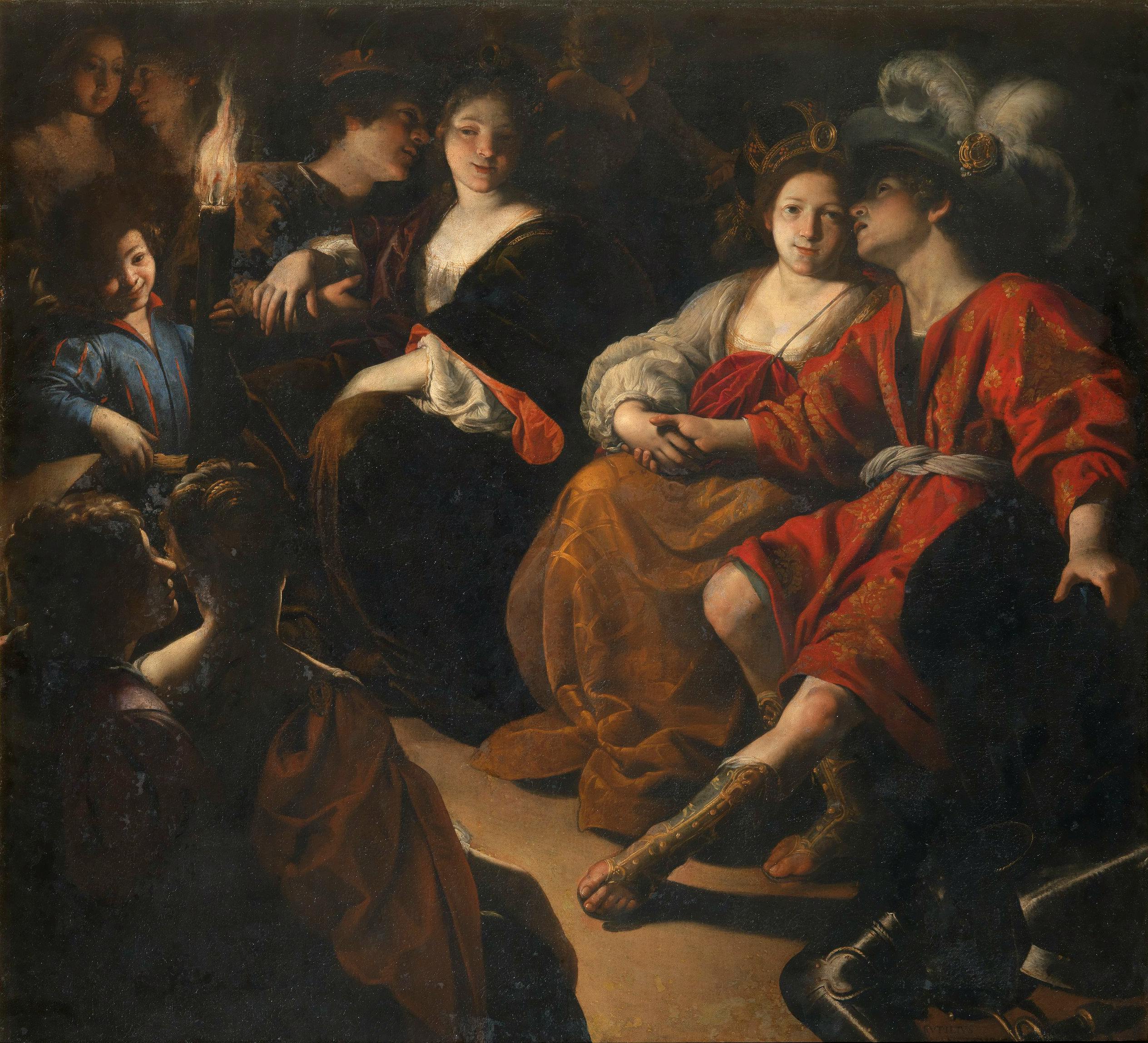Ruggiero at the court of the sorceress Alcina
Rutilio Manetti (Siena 1571-1639)
RVTILIVS MANETTVS (on Ruggiero's weapons)
The painting is a faithful representation of the episode from Aristotle's Orlando furioso (VII, 21-22) in which Ruggiero arrives at Alcina’s court where, seduced by her beauty, he joins the feast prepared in his honor together with other couples. As the poem explains: “the tables and food taken away, seated in a circle they played a happy game, whispering into the ears of one another to ask their secrets [...]”. The setting devoid of any spatial references, the evocative contrasting light of the torchlight, the gesture of whispering into one another’s ears and the slightly raised perspective of the scene, as though someone were spying on the amorous gathering, effectively evoke the ambiance of ambiguity and seduction created by the sorceress’ spell to enchant Ruggiero. In particular, the candlelight inspired by the paintings of the Dutch artist Gherardo delle Notti, whose Florentine works in the Medici collections would certainly have been known to Manetti, is particularly effective in portraying the enchanted night described in “Orlando Furioso”. The scene is highly symbolic and was intended as a warning to live a virtuous life and not be enslaved by lust. Indeed, in the painting Ruggiero's armor, a symbol of chivalry, lies discarded on the ground at his feet, and it is here that the artist has added his signature. The choice of subject is closely linked to the work's original destination; it was commissioned by Cardinal Carlo de’ Medici, brother of Grand Duke Cosimo II, for the Casino di San Marco residence, a villa with a large garden. In the hall on the ground floor, the Cardinal had collected a series of works all inspired by scenes from Tasso, Aristotle and Ovid, aimed at exalting virtue and human reason while cautioning against sin and unhealthy passions.
